Erika Fonseca
Adaptive Height Optimisation for Cellular-Connected UAVs using Reinforcement Learning
Jul 27, 2020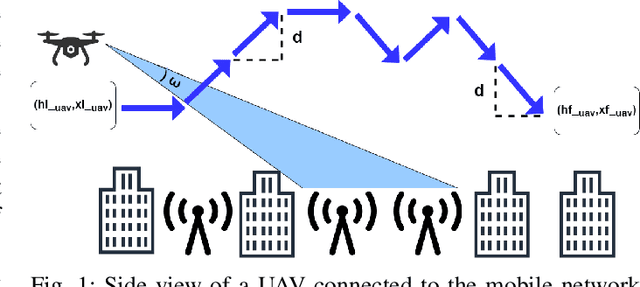
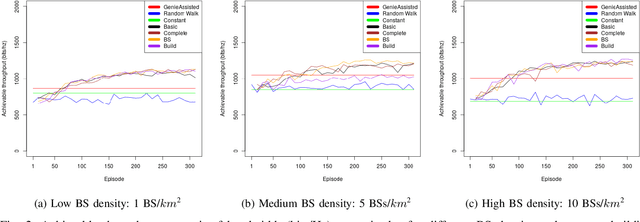

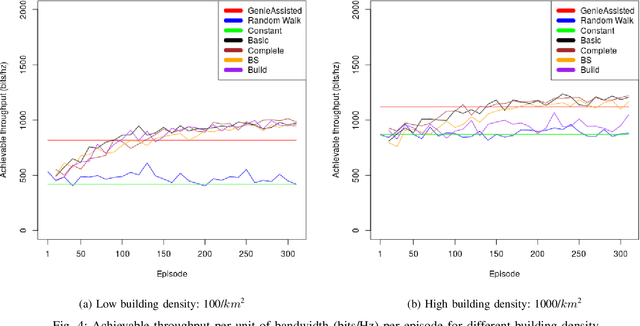
Abstract:With the increasing number of \acp{uav} as users of the cellular network, the research community faces particular challenges in providing reliable \ac{uav} connectivity. A challenge that has limited research is understanding how the local building and \ac{bs} density affects \ac{uav}'s connection to a cellular network, that in the physical layer is related to its spectrum efficiency. With more \acp{bs}, the \ac{uav} connectivity could be negatively affected as it has \ac{los} to most of them, decreasing its spectral efficiency. On the other hand, buildings could be blocking interference from undesirable \ac{bs}, improving the link of the \ac{uav} to the serving \ac{bs}. This paper proposes a \ac{rl}-based algorithm to optimise the height of a UAV, as it moves dynamically within a range of heights, with the focus of increasing the UAV spectral efficiency. We evaluate the solution for different \ac{bs} and building densities. Our results show that in most scenarios \ac{rl} outperforms the baselines achieving up to 125\% over naive constant baseline, and up to 20\% over greedy approach with up front knowledge of the best height of UAV in the next time step.
Radio Access Technology Characterisation Through Object Detection
Jul 27, 2020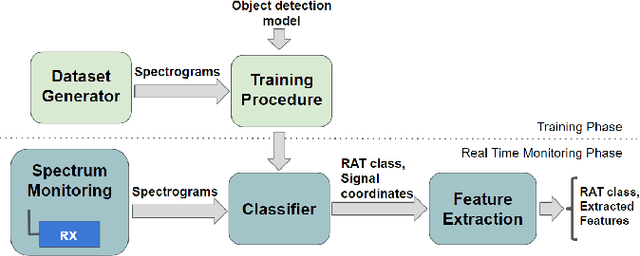
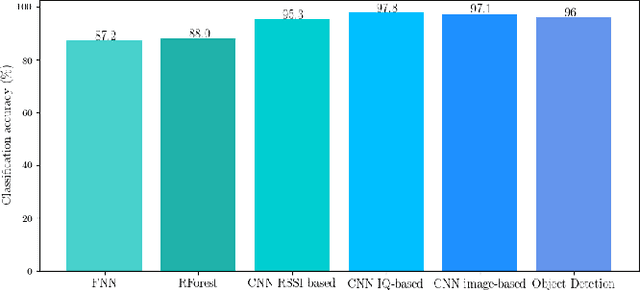
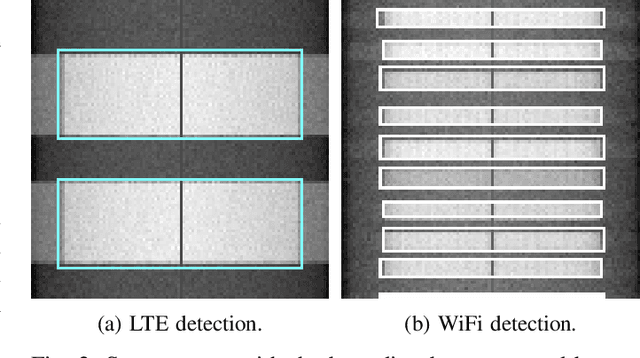
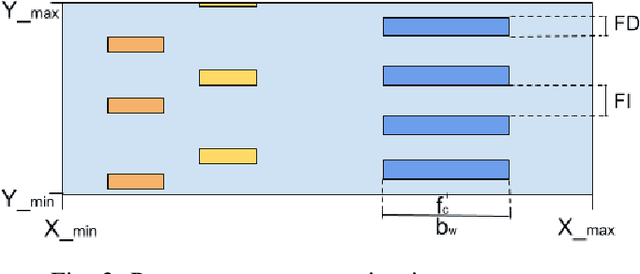
Abstract:\ac{RAT} classification and monitoring are essential for efficient coexistence of different communication systems in shared spectrum. Shared spectrum, including operation in license-exempt bands, is envisioned in the \ac{5G} standards (e.g., 3GPP Rel. 16). In this paper, we propose a \ac{ML} approach to characterise the spectrum utilisation and facilitate the dynamic access to it. Recent advances in \acp{CNN} enable us to perform waveform classification by processing spectrograms as images. In contrast to other \ac{ML} methods that can only provide the class of the monitored \acp{RAT}, the solution we propose can recognise not only different \acp{RAT} in shared spectrum, but also identify critical parameters such as inter-frame duration, frame duration, centre frequency, and signal bandwidth by using object detection and a feature extraction module to extract features from spectrograms. We have implemented and evaluated our solution using a dataset of commercial transmissions, as well as in a \ac{SDR} testbed environment. The scenario evaluated was the coexistence of WiFi and LTE transmissions in shared spectrum. Our results show that our approach has an accuracy of 96\% in the classification of \acp{RAT} from a dataset that captures transmissions of regular user communications. It also shows that the extracted features can be precise within a margin of 2\%, %of the size of the image, and is capable of detect above 94\% of objects under a broad range of transmission power levels and interference conditions.
 Add to Chrome
Add to Chrome Add to Firefox
Add to Firefox Add to Edge
Add to Edge